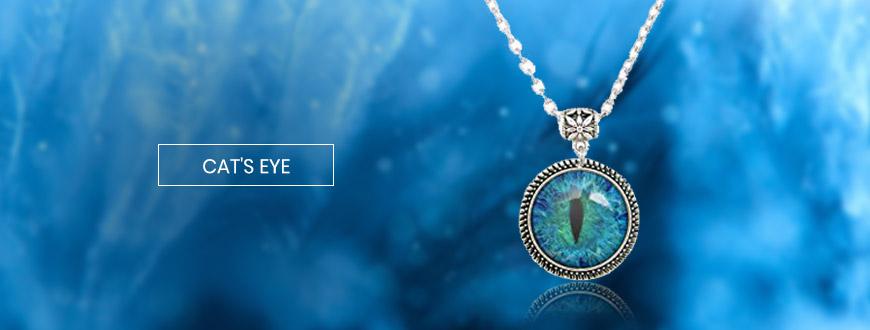Kalyan Wiki

Cat's Eye
Cat’s eye refers to all the gemstones exhibiting the cat’s eye effect. This effect is termed chatoyancy, that is, the tendency of stone to display light in a narrow band across the width of the stone, perpendicular to the inclusions in the stone. This effect is most pronounced in the gemstone Chrysoberyl.
While referring to Chrysoberyl, no prefix or suffix is used with the word ‘cat’s eye’. Sometimes the word Chrysoberyl is suffixed, eg., cat’s eye Chrysoberyl. When referring to other gemstones with the cat’s eye effect, particularly Quartz, Apatite, Beryl, Charoite, Tourmaline, Thomsonite, Labradorite, Selenite, Feldspar, Moonstone, and Scapolite, other than Chrysoberyl, the term ‘cat’s eye’ is usually prefixed with the name of that gemstone, eg. Quartz cat’s eye. The Chrysoberyl also displays a ‘milk and honey’ effect, that is, one side of the stone appears white, and the other side appears golden when light is shown from the sides of the stone.
Chrysoberyl occurs in three varieties of aluminates of Beryllium. The ordinary Chrysoberyl is yellowish-green and transparent. The Cymophane or cat’s eye, the other variety of Chrysoberyl, is lime to yellow colour and translucent, qualifying it as a gemstone. The third variety is called Alexandrite, a gem exhibiting three colours, namely red, emerald green and orange/yellow when viewed from three different directions.
The price of cat’s eye is dependent on the depth of the stone colour, transparency and sharpness of the eye. The stone should be polished into Carbochon to exhibit chatoyancy and native cut with uneven bottoms to reveal the eye of the stone. The cat’s eye stone is then graded into standard quality, fine quality and premium quality.
Chrysoberyl cat’s eye, also known as ‘Vaidurya’, is the gemstone representing the south node of the Moon, Ketu.







